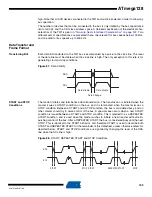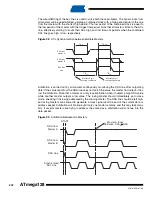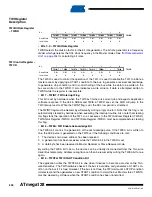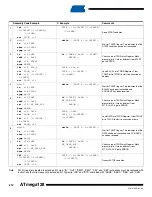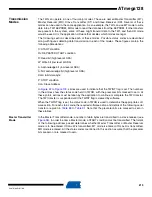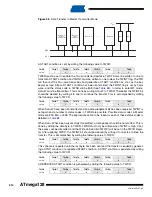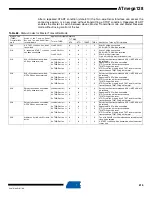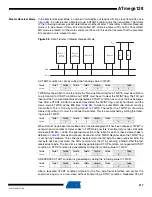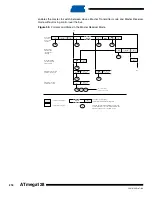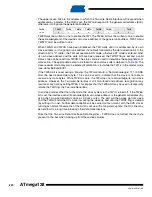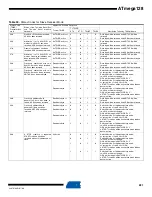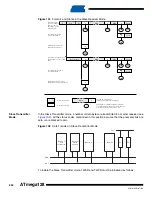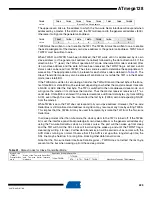
210
2467S–AVR–07/09
ATmega128
application must load a data packet into TWDR. Subsequently, a specific value must be
written to TWCR, instructing the TWI hardware to transmit the data packet present in
TWDR. Which value to write is described later on. However, it is important that the
TWINT bit is set in the value written. Writing a one to TWINT clears the flag. The TWI will
not start any operation as long as the TWINT bit in TWCR is set. Immediately after the
application has cleared TWINT, the TWI will initiate transmission of the data packet.
6.
When the data packet has been transmitted, the TWINT flag in TWCR is set, and TWSR
is updated with a status code indicating that the data packet has successfully been sent.
The status code will also reflect whether a slave acknowledged the packet or not.
7.
The application software should now examine the value of TWSR, to make sure that the
data packet was successfully transmitted, and that the value of the ACK bit was as
expected. If TWSR indicates otherwise, the application software might take some special
action, like calling an error routine. Assuming that the status code is as expected, the
application must write a specific value to TWCR, instructing the TWI hardware to transmit
a STOP condition. Which value to write is described later on. However, it is important that
the TWINT bit is set in the value written. Writing a one to TWINT clears the flag. The TWI
will not start any operation as long as the TWINT bit in TWCR is set. Immediately after
the application has cleared TWINT, the TWI will initiate transmission of the STOP condi-
tion. Note that TWINT is NOT set after a STOP condition has been sent.




